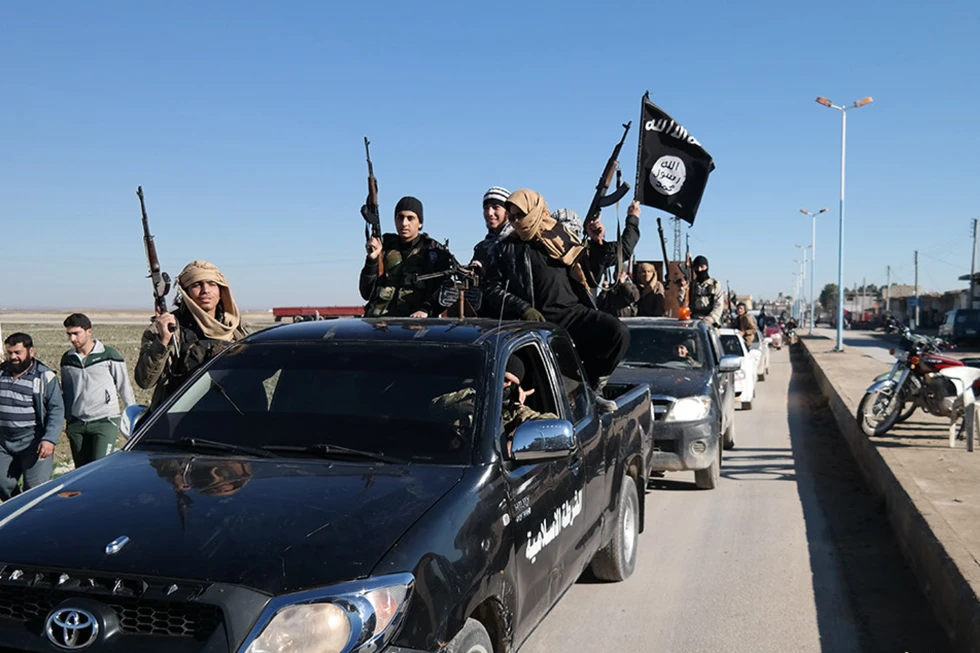DAMASCUS, Syria — The Islamic State group has claimed responsibility for two separate attacks in southern Syria, including what observers say is the first assault on Syrian government forces since the fall of Bashar Assad’s regime—a sign that IS may be regrouping in the country’s post-war landscape.

In a statement issued Thursday, the extremist group said it planted a bomb targeting a “vehicle of the apostate regime,” killing or wounding seven soldiers. The attack reportedly occurred on May 22 in al-Safa, a remote desert area in Sweida province.
The Syrian Observatory for Human Rights, a Britain-based opposition monitor, confirmed the explosion, saying one civilian died and three Syrian soldiers were wounded. The group described the incident as the first IS-claimed attack on the Syrian military since the Assad family’s 54-year rule ended in December, when President Ahmad al-Sharaa assumed power.
A separate IS statement claimed responsibility for another bombing this week targeting the U.S.-backed Free Syrian Army in a nearby location. The group said the blast killed one fighter and injured three others. Neither the Syrian government nor the Free Syrian Army responded to requests for comment.
The attacks raise alarm over the Islamic State’s continued presence in Syria’s fragmented security landscape, even after the group’s territorial defeat in March 2019. At that time, Syrian Democratic Forces (SDF), supported by the U.S., captured IS’s final stronghold in the country’s northeast.
Since then, IS sleeper cells have maintained a low-level insurgency, mostly targeting SDF forces and rural areas in the east. But the recent attack against Syrian government troops may mark a strategic shift—signaling that the militants are now confronting the post-Assad government directly.
IS considers Ahmad al-Sharaa, the current Syrian president, a sworn enemy. Once the head of al-Qaida’s Syrian branch, al-Sharaa had led fierce battles against IS militants during Syria’s fragmented civil war.
In January, Syrian state media reported that intelligence agents had thwarted a bombing plot by IS targeting a Shiite Muslim shrine south of Damascus—an incident that now appears to be part of a broader pattern of re-emerging threats.
Earlier this month, President al-Sharaa met with U.S. President Donald Trump in Saudi Arabia, in the highest-level diplomatic engagement between Washington and Damascus since Assad’s ouster. Trump pledged to work on lifting U.S. sanctions imposed during the Assad era.
Following the meeting, White House Press Secretary Karoline Leavitt said Trump had urged al-Sharaa to recognize Israel diplomatically, expel all foreign militant groups, and cooperate with U.S. efforts to prevent an IS resurgence.
Despite its loss of territory, the Islamic State continues to exploit chaos in war-torn regions, using improvised explosive devices, ambushes, and assassinations to destabilize communities. Its attacks against both government and opposition forces underline the group’s enduring objective: to reignite conflict and undermine stability in Syria’s already fragile political transition.
The United Nations and Western intelligence services have warned that IS-affiliated cells remain active in border zones and rural desert areas, including al-Safa, a long-recognized extremist hideout.
As President al-Sharaa attempts to stabilize Syria and re-engage with the international community, the threat of a resurgent Islamic State insurgency poses a serious challenge to both domestic security and regional peace efforts.



